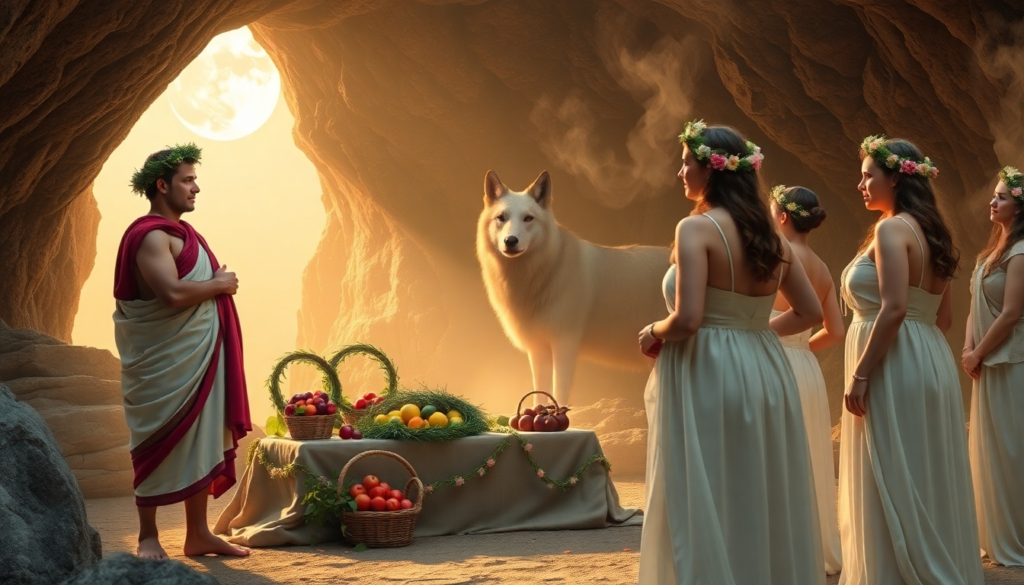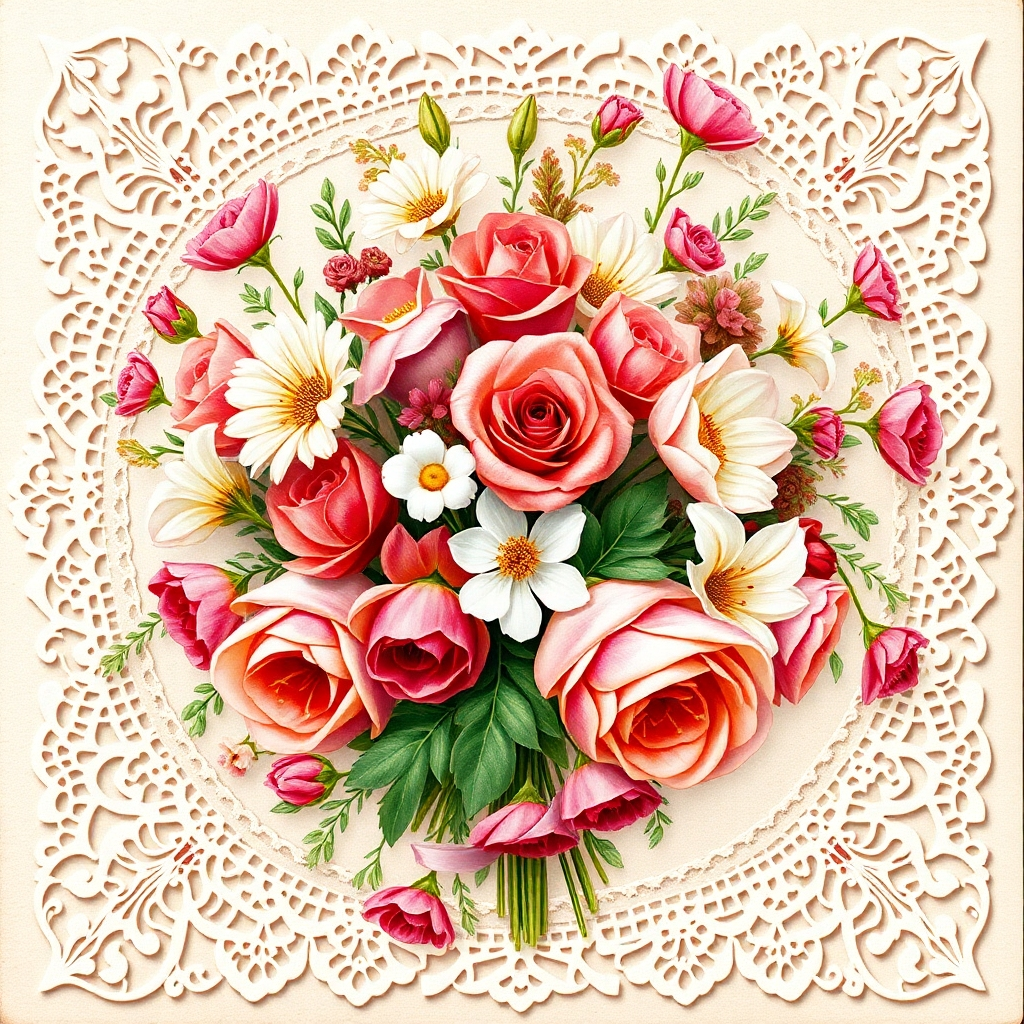The Ancient Origins of Valentine’s Day

The celebration of Valentine’s Day has roots that extend deep into the annals of history, with its origins intricately woven into ancient Roman and pagan traditions. One of the earliest precursors to this modern love-themed holiday is the festival of Lupercalia, which was observed annually on February 15. Lupercalia was a festival dedicated to fertility, featuring various rituals and rites aimed at promoting health and prosperity. These ancient practices were believed to facilitate fertility among both humans and livestock, highlighting the connection between this time of year and the renewal of life.
During Lupercalia, Roman priests would gather at the Lupercal cave, where it was believed that Romulus and Remus were nursed by a she-wolf. The festivities included the sacrifice of goats and the ritualistic use of their skins, which were fashioned into thongs that were later used to gently strike women. This act was thought to enhance fertility, thereby directly linking the festival to the burgeoning themes of love and romance that would later become associated with Valentine’s Day.

The transition from Lupercalia to Valentine’s Day was further influenced by the martyrdom of St. Valentine, a Christian priest who was executed around 269 AD for defying Emperor Claudius II’s ban on marriages for young men. Legend suggests that St. Valentine continued to perform clandestine weddings, which solidified his association with love and commitment. Over time, Valentine’s connection with romantic love grew stronger, culminating in the day dedicated to expressing affection through the exchange of love notes and tokens. Thus, what began as a fertility rite enshrouded in Roman paganism gradually evolved into a day celebrated for romantic love, leading to the modern traditions we recognize today.
Saint Valentine: The Legend and Its Impact
The figure of Saint Valentine has captivated the imagination for centuries, serving as a focal point for the annual celebration of love on February 14th. Various legends surround Saint Valentine, each portraying him as a martyr who acted compassionately towards couples during a time when love was met with adversity. One of the most popular stories suggests that Valentine was a priest in Rome during the reign of Emperor Claudius II. At that time, Claudius had banned marriages for young men, believing that single men made better soldiers. Valentine defied this decree by continuing to perform secret marriages for young couples in love. Upon discovery, he was imprisoned and later executed, cementing his status as a martyr.

Another lesser-known legend attributes his association with love to his compassionate act of helping persecuted Christians. While in prison, Valentine is said to have comforted and healed fellow prisoners, even performing miraculous acts. This spirit of love and selflessness has long been emblematic of the ethos celebrated on Valentine’s Day, ultimately underpinning its core values of affection and devotion. His legacy was further solidified in the 5th century when Pope Gelasius declared February 14th as Saint Valentine’s Day, highlighting the priest’s virtues of love and kindness.
The Evolution of Valentine’s Day in the Middle Ages
During the Middle Ages, Valentine’s Day began to take on a more romantic character, particularly in Europe, as concepts of courtly love became prominent. This cultural shift was significant, transitioning from a day primarily dedicated to honoring Saint Valentine to one that celebrates romantic affection. Poets and troubadours contributed to this evolution, with romantic poetry flourishing. Works from figures such as Geoffrey Chaucer captured the spirit of the time, portraying love in an idealized manner. Later poets like William Shakespeare, John Donne, and Elizabeth Barrett Browning continued to explore love’s many facets, resonating with love-struck individuals across different eras.
In this period, the exchange of love notes became a cherished practice. These notes allowed individuals to express their affection in a more personalized manner. The act of writing heartfelt messages became an intimate way to connect with loved ones and solidified the importance of verbal expression in romantic relationships. As literacy began to rise, the exchange of these notes became more widespread, contributing to the modern practices of Valentine’s Day that many recognize today.
The custom of sending cards, while still nascent, began to emerge during the Middle Ages as a reflection of changing social dynamics. The idea of sending a handwritten card allowed individuals to declare their feelings in a tangible form. Although commercially produced Valentine’s cards would not become popular until much later, the foundation for this practice was laid during this period. The integration of illustrations and poetic sentiments on these cards emphasized the emotional significance tied to February 14th, allowing people to publicly acknowledge their love.
Thus, during the Middle Ages, Valentine’s Day evolved from a day of religious observation to a celebration of love and romantic relationships. This transformation highlighted the interplay between societal changes and personal expressions of affection, paving the way for how contemporary Valentine’s Day is celebrated today.
Valentine’s Day in the 19th Century: Commercialization and Cards
The 19th century marked a significant turning point in the celebration of Valentine’s Day, particularly with the rise of commercialization and the widespread use of Valentine cards. As society became increasingly urbanized and literacy rates improved, the desire for connection and expression evolved into a social phenomenon that defined the holiday. The introduction of mass-produced Valentine cards played a pivotal role in shaping how individuals conveyed their affections.
In the early part of the century, handmade cards were the norm, crafted with great care and personal touches. However, the advent of advancements in printing technology made it possible for Valentines to be produced en masse. This technological innovation greatly reduced production costs and made greeting cards accessible to the wider public. In the 1840s, Esther Howland, known as the “Mother of the American Valentine,” began creating elaborate cards adorned with lace, ribbon, and intricate designs, which quickly gained immense popularity. Her business established a blueprint for the greeting card industry, illustrating how romantic sentiments could be conveyed through professionally made cards.

As more companies entered the market, the variety of Valentine cards expanded. The proliferation of manufacturers led to a myriad of options, from romantic to humorous, which catered to different tastes and social classes. This commercialization coincided with a shift in cultural norms; Valentine’s Day transitioned from a purposefully intimate occasion to a more widely celebrated event, where people exchanged cards and gifts freely, regardless of their romantic involvement.
Furthermore, this period saw an increase in societal expectations surrounding Valentine’s Day. The commercialization of the holiday introduced new customs and traditions, influencing how individuals expressed their affections. By creating an avenue for broader participation, Valentine’s Day in the 19th century solidified its position as a significant social event, paving the way for the modern celebrations we recognize today.
Valentine’s Day Celebrations Around the World
Valentine’s Day, a day dedicated to expressing love and affection, is celebrated globally with unique customs and traditions that vary significantly from one culture to another. In Japan, for instance, Valentine’s Day is marked by a rather unique custom where women give chocolates to the men in their lives, often categorized into ‘giri-choco’ (obligation chocolate) for colleagues and friends, and ‘honmei-choco’ (true feelings chocolate) for romantic interests. This custom not only promotes the expression of feelings but also sets the stage for another celebration, White Day, which takes place on March 14, when men are expected to reciprocate with gifts.
Moving to South Korea, the celebration of Valentine’s Day extends the traditions seen in Japan but introduces its own flair. In addition to receiving chocolates, women present gifts to their partners on February 14th, with a unique twist on March 14th—a day known as Black Day, aimed at singles who didn’t receive gifts on either Valentine’s Day or White Day. On this day, they gather to eat black noodles, which symbolizes their single status, highlighting cultural nuances in the expression of love and camaraderie.
In contrast, Brazil celebrates Valentine’s Day on June 12th, in conjunction with the feast day of Saint Anthony, who is known for helping people find love. Festivities include lively parties, traditional foods such as a special dessert called ‘pavê,’ and the custom of exchanging gifts or notes of affection. The celebrations are marked by a carnival-like atmosphere filled with music and dance, illustrating how love can conjure vibrant communal joy.
These diverse customs symbolize not only local traditions but also the universal language of love shared on Valentine’s Day. Each culture brings its own interpretation, enriching the tapestry of celebrations around the world and showcasing the various ways affection is expressed.
Modern Valentine’s Day: Rituals and Trends
Modern Valentine’s Day has evolved significantly from its historical roots, transforming into a multifaceted celebration primarily focused on romantic love. In Western culture, the day is characterized by various rituals that range from traditional expressions of love to contemporary trends influenced by social developments and technology. One notable trend is the exchange of extravagant gifts, with couples often opting for high-value items such as jewelry, luxury experiences, and personalized gifts. These physical tokens of affection symbolize not only love but also the social status associated with one’s relationship.
Alongside gifts, dining out on Valentine’s Day has become a common practice, with many couples indulging in romantic dinners at upscale restaurants. Special menus, themed décor, and intimate settings are designed to enhance the overall experience. Reservations are frequently made months in advance as couples seek to secure their place for this cherished evening. In addition to dining out, hosting home-cooked dinners or surprise at-home dates has emerged as a popular trend, particularly in light of recent global events that have reshaped social interactions.
Social media has also significantly influenced modern Valentine’s Day celebrations. Couples share their expressions of love online through heartfelt posts, photos, and videos. Platforms such as Instagram and Facebook have become a space for public declarations, allowing individuals to showcase their relationships and celebrate their partners in front of friends and family. This digital expression of love, along with the trend of using social media for gifting ideas and romantic inspiration, highlights a more collective approach to the celebration.
The commercialization of Valentine’s Day has sparked discussions on the true meaning of the holiday. While many embrace the opportunity to express affection through gifts and experiences, others critique the pressure to spend and conform to certain ideals of romantic expression. The shift in perception reveals a complex dynamic where the essence of love intersects with consumer culture, emphasizing the need for individuals to define what Valentine’s Day means to them personally.
Alternative Celebrations: Friendship and Self-Love
In recent years, there has been a noticeable shift in the societal perception of love, with increasing recognition of the importance of friendships and self-love alongside traditional romantic relationships. This evolution has given rise to alternative celebrations such as Galentine’s Day, which focuses on honoring female friendships on February 13th, just before Valentine’s Day. Originating from the popular television show “Parks and Recreation,” Galentine’s Day promotes the idea that love is not limited to romantic partnerships but is equally found in the bonds we share with friends.

The growing movement towards embracing alternative forms of love reflects a broader change in cultural values. Many individuals, especially millennials and Gen Z, are redefining their relationships and the significance they place on companionship. This evolving landscape encourages people to cultivate self-love and nurturing friendships, fostering connections that are based on mutual respect, support, and shared experiences. As a result, individuals are increasingly celebrating their platonic relationships, finding joy in gatherings, heartfelt conversations, and shared activities that enhance their social networks.
Additionally, the rise in self-care practices has led to a greater emphasis on self-love. People are dedicating time to appreciate their own worth and prioritize mental well-being. Celebrating oneself can take various forms, including indulgent self-care days, personal reflection, or engaging in hobbies that bring joy and fulfillment. This focus on personal development not only enhances individual happiness but also contributes to healthier relationships with others.
As societal values continue to evolve, the acceptance of alternative celebrations signifies a more inclusive understanding of love, paving the way for individuals to embrace and honor the myriad forms that love can take in today’s world.
The Role of Technology in Valentine’s Day
The evolution of technology has significantly transformed the way people celebrate Valentine’s Day, introducing novel tools that foster connections and enhance expressions of affection. Dating apps have emerged as a game changer, allowing individuals to find companionship and romantic partners from the convenience of their smartphones. Platforms like Tinder, Bumble, and Hinge facilitate not just casual dating but also serious relationships, making it easier to connect with others who share similar interests and values.
Moreover, in an era marked by the COVID-19 pandemic, traditional celebrations have adapted to embrace virtual interactions. Video conferencing platforms, such as Zoom and Skype, have gained popularity as means for couples to maintain their connections, enabling them to celebrate occasions like Valentine’s Day while being apart. Virtual dates have become commonplace, with couples engaging in everything from online cooking classes to shared movie nights, allowing them to create meaningful experiences despite physical distance.
Additionally, digital gifting has also become a focal point in modern romantic gestures. From e-cards to online gift baskets, technology facilitates instant delivery of gifts, making it convenient for individuals to share their affection. Services that allow personalized shopping experiences or subscription boxes curated for the recipient reflect a shift towards customized expressions of love. As a result, technology not only enhances the way people connect but also redefines what romantic gestures look like in today’s world.
These advancements raise questions about the future of traditional romance and the role of tangible experiences. As society continues to navigate the integration of technology into everyday interactions, it is crucial to consider how these trends will shape the way we celebrate love and relationships in the years to come. Ultimately, while technology serves as a valuable tool to foster connections, it will be interesting to see how it coexists with more conventional romantic practices.
The Future of Valentine’s Day: Where Do We Go From Here?
As we look ahead to the future of Valentine’s Day, it becomes evident that the ways in which love is celebrated are poised to evolve in response to changing societal values and technological advancements. One prominent trend is the increasing importance of individual authenticity in expressions of love. With a stronger societal focus on mental well-being and self-love, future celebrations may prioritize personalized gestures over conventional gifts or extravaganzas, allowing celebrants to craft experiences that resonate more deeply with their values and relationships.
Technology is also likely to play a crucial role in shaping future Valentine’s Day traditions. From virtual reality experiences that enable long-distance couples to celebrate together, to the rise of personalized AI-generated poems or messages, the digital landscape is rich with possibilities. As people continue to navigate a fast-paced world, they may increasingly turn to innovative technologies to connect with loved ones in meaningful ways, thereby redefining how love is showcased on this day.

Moreover, as globalization continues to influence cultural practices, there may be a blending of various international expressions of love and romance. We could see individuals incorporating elements from diverse cultures into their Valentine’s Day observances, enriching the celebration with new symbols and rituals that reflect a broader understanding of love. This cultural amalgamation may foster greater appreciation for unique traditions while facilitating deeper connections among people.
Ultimately, the future of Valentine’s Day will challenge each of us to reflect on the essence of love in our lives. As we embrace this forward trajectory, let’s think about how we can express our affections authentically and genuinely. By blending tradition with innovation, we can create a celebration of love that remains relevant and enriching for future generations.
May your Valentine’s Day be filled with heartfelt moments, genuine expressions of love, and the joy of creating beautiful memories. Wishing you a day that’s as special and unique as the love you share. Happy Valentine’s Day!
